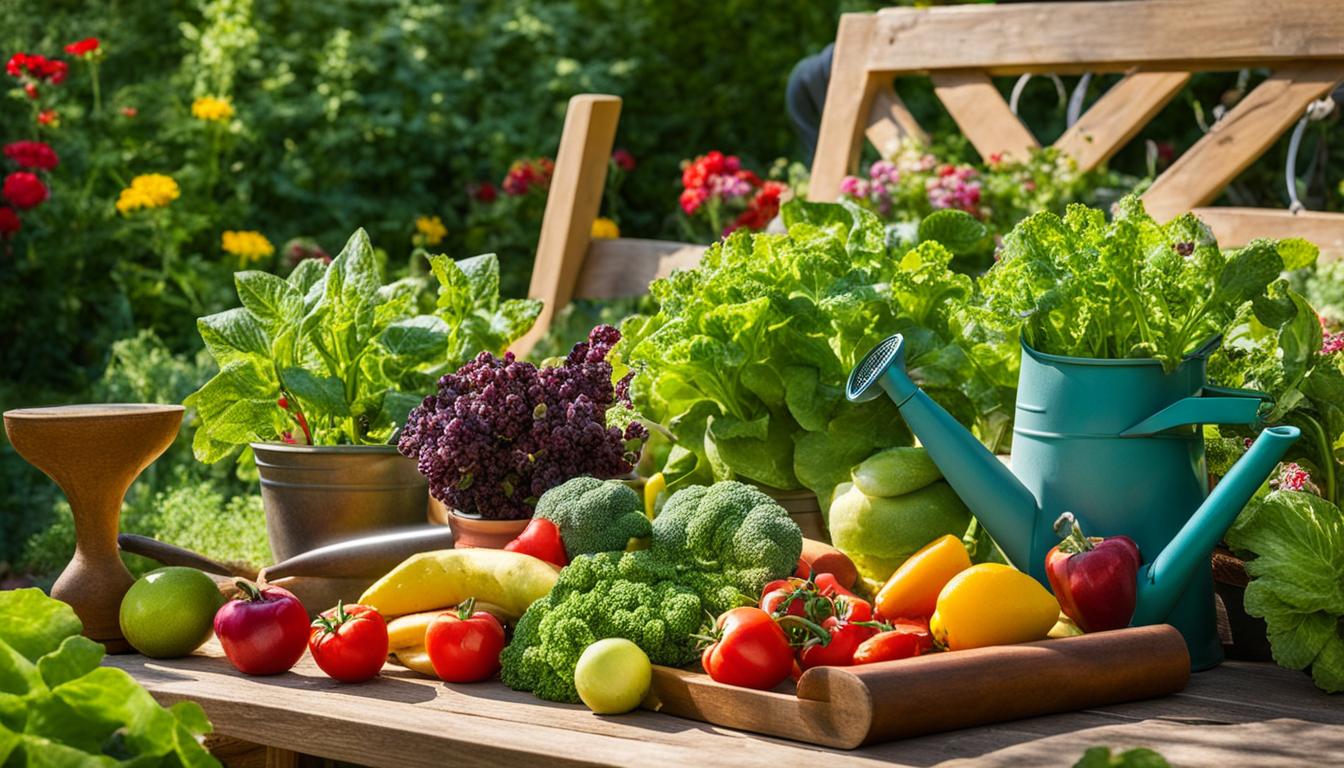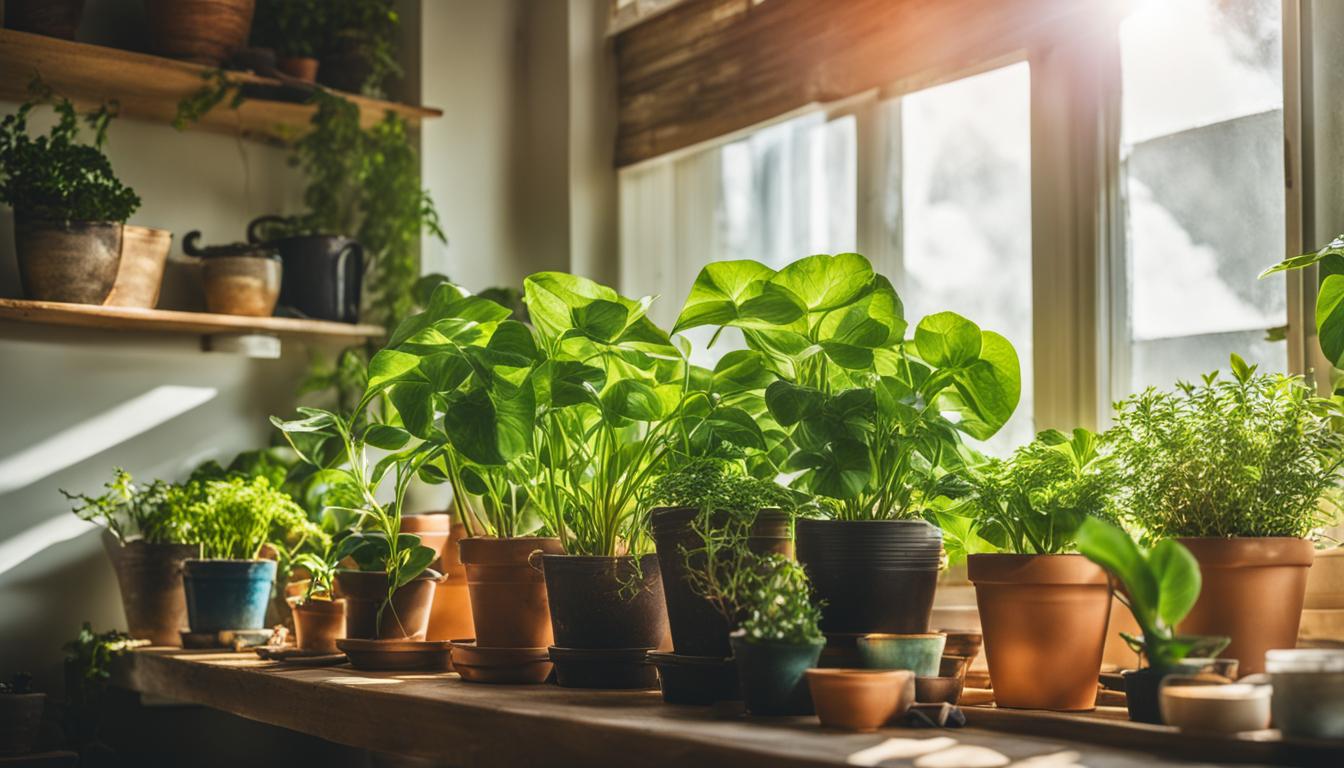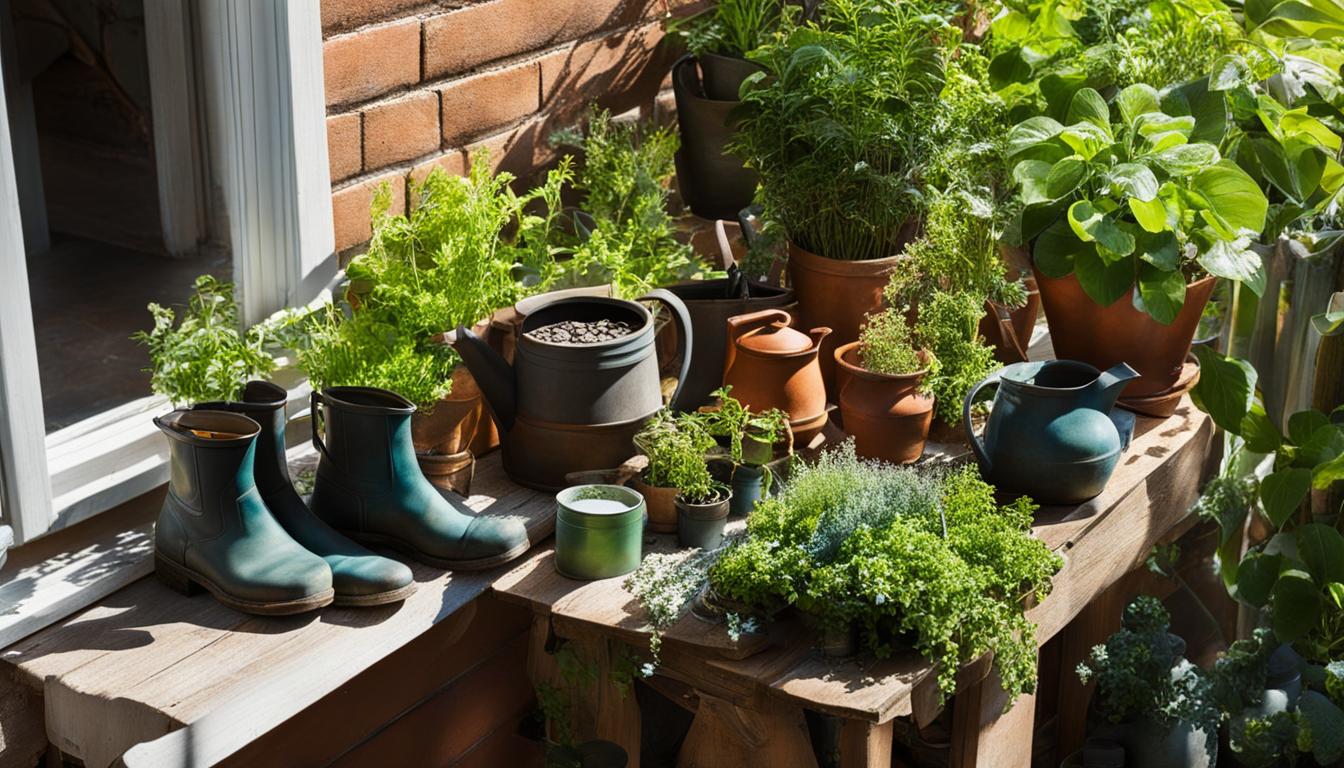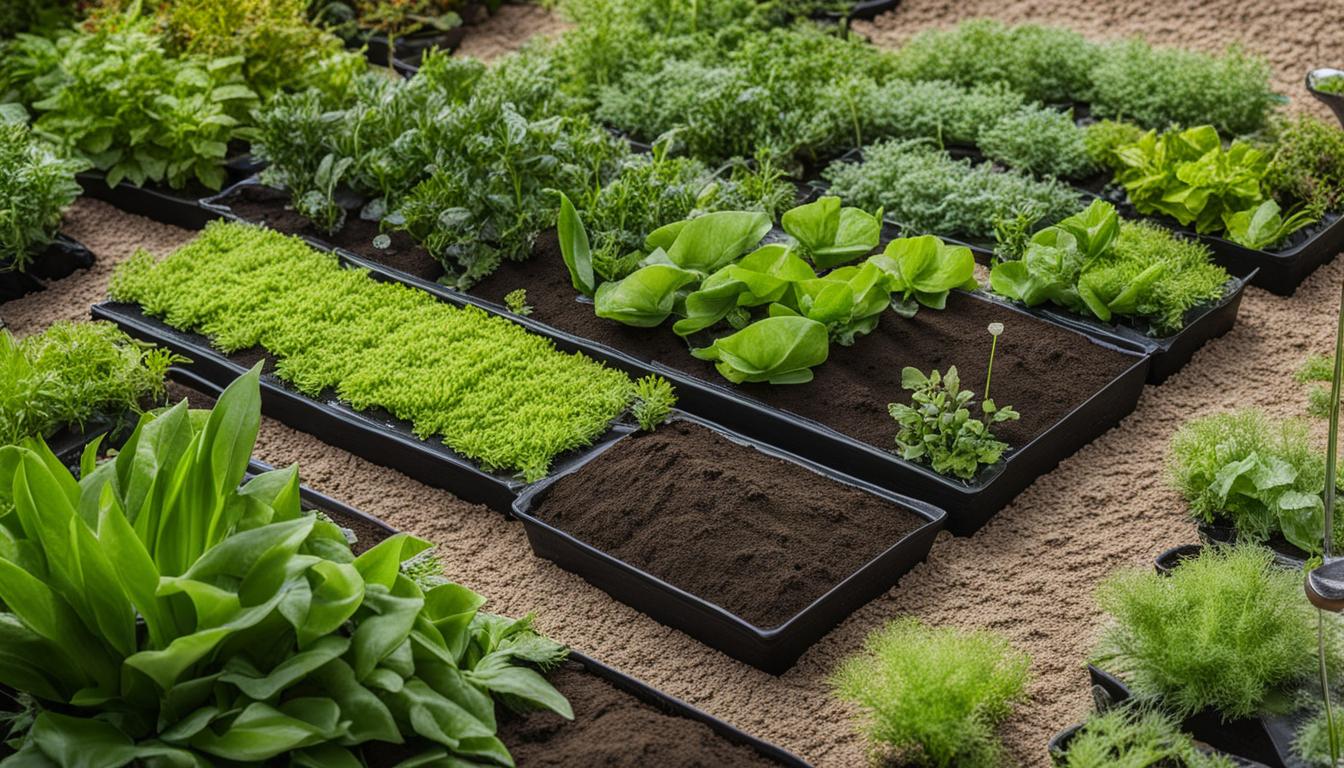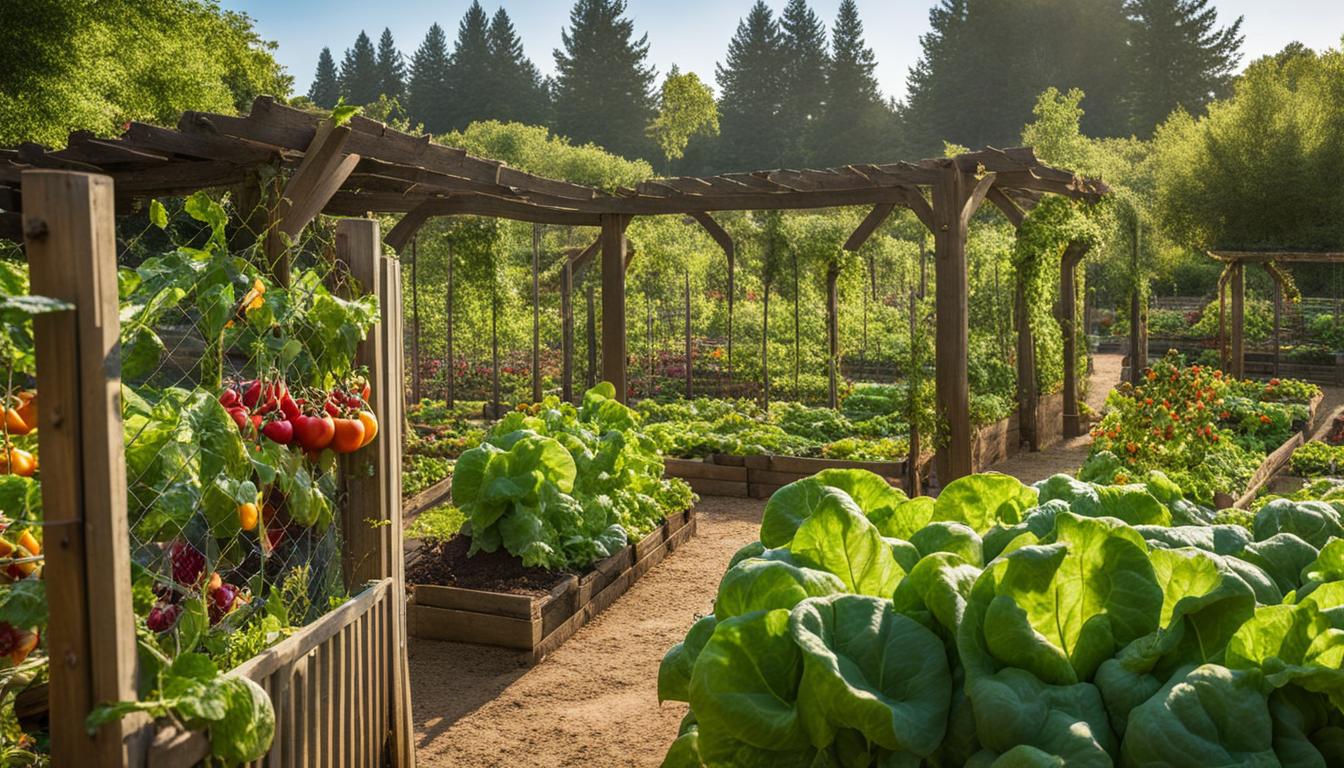Welcome to my guide on essential gardening tips for summer. As the weather heats up, it’s important to adjust your gardening practices to ensure your plants thrive. In this section, I will share the best tips for summer gardening to help you maximize your greens and enjoy a bountiful garden.
With the right planning, preparation, and techniques, you can maintain a healthy and productive garden throughout the summer months. From selecting the right plants to watering and pest control, I’ll cover all the essential summer gardening tips you need to know. So let’s get started!
Plan and Prepare for Summer Gardening
Summer is the perfect time to enjoy the great outdoors, and what better way to do that than by starting a garden? Before diving into the world of summer gardening, it’s important to plan and prepare. Here are some easy and successful summer gardening tips to help you get started:
Assess Your Space
The first step in planning your summer garden is to assess the space you have available. Decide on the location and size of your garden, and determine which plants will thrive in that particular environment. Consider factors like sunlight, shade, and soil conditions.
Choose Your Plants Wisely
Choosing the right plants for your summer garden is crucial for success. Opt for plants that are heat-tolerant, drought-resistant, and well-suited for your area. Some popular summer garden plants include tomatoes, peppers, cucumbers, and herbs like basil and rosemary.
Prepare the Soil
Healthy soil is the foundation of a successful garden. Before planting, make sure to prepare the soil by removing any debris and adding organic matter like compost or manure. This will provide the nutrients your plants need to grow strong and healthy.
Invest in the Right Tools
Having the right gardening tools can make all the difference. Invest in high-quality tools like a watering can, gloves, trowel, and pruner to help you maintain your garden throughout the summer.
Establish a Watering Schedule
Proper watering is key to maintaining a healthy garden during the hot summer months. Develop a watering schedule and stick to it, making adjustments as needed based on weather conditions and soil moisture levels.
Protect Your Garden
Summer gardening comes with its fair share of challenges, including pests, heat, and drought. Take steps to protect your garden by adding fencing to keep out animals, using organic pest control methods, and incorporating shade covers to protect delicate plants from direct sunlight.
Start Small
If you’re new to gardening, it’s important to start small and work your way up. Focus on a few key plants and gradually expand your garden as you gain more experience.
Have Fun!
Most importantly, have fun with your summer garden! Gardening is a rewarding and enjoyable hobby that allows you to connect with nature and enjoy the fruits of your labor. Don’t be afraid to experiment, try new things, and enjoy the journey.
Select the Right Plants for Summer
When it comes to summer gardening, selecting the right plants is key to ensuring a successful and thriving garden. Here are my expert tips for choosing the best plants to cultivate during the summer months:
- Opt for Heat-Loving Plants: Plants that thrive in hot temperatures and direct sunlight are ideal for summer gardening. These plants can include tomatoes, peppers, cucumbers, zucchini, and squash.
- Consider Your Soil: Different plants require different soil conditions to grow and thrive. Before selecting your plants, test your soil to determine its pH level and nutrient content. This information will help you choose plants that are well-suited for your specific soil conditions.
- Choose Disease-Resistant Plants: Summer is a prime time for pests and diseases to attack your garden. To combat this, choose plants that are disease-resistant, such as marigolds, petunias, and zinnias.
- Select Perennial Plants: Planting perennials in your summer garden will save you time and money in the long run. These plants come back year after year, providing a permanent and low-maintenance addition to your garden.
By following these best tips for summer gardening, you can ensure that your garden is filled with the right plants that will thrive during the hot summer months.
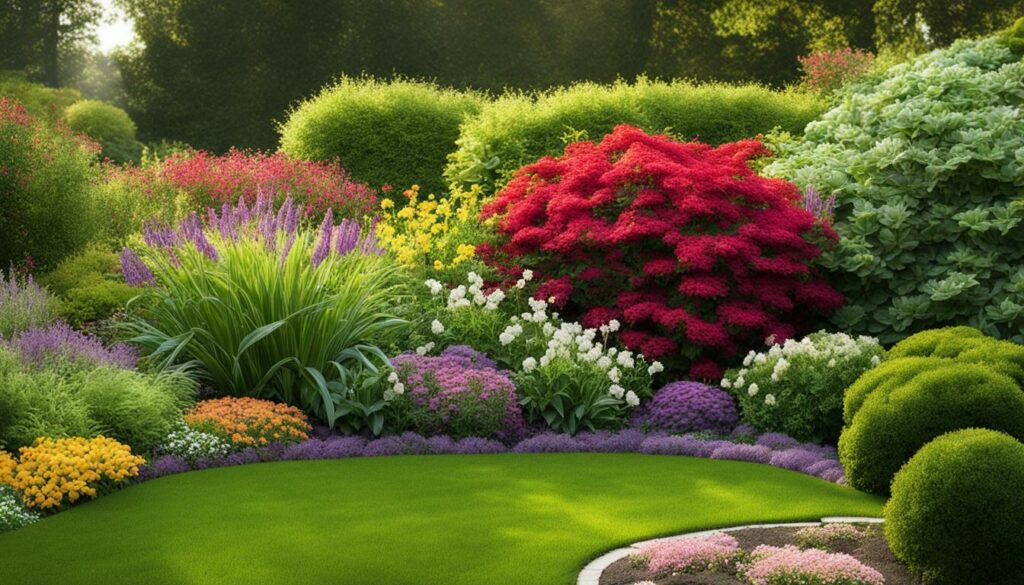
“Choose the plants that will thrive in your particular climate. There are many factors to consider, including sunlight, temperature, and soil conditions.”
With the right plants in place, your summer garden is sure to be a success. Next up, learn about proper watering techniques to keep your plants hydrated and healthy throughout the season.
Watering Techniques for Summer
In the heat of summer, watering your garden properly is crucial for maintaining healthy and vibrant plants. Here are some essential watering techniques to keep your garden thriving:
- Water deeply and less often: Instead of frequent, light watering, give your plants a deep soak once a week to encourage deeper roots and drought tolerance. This also helps prevent evaporation.
- Water early in the day: Watering in the morning allows plants to absorb moisture before the sun evaporates it. Avoid watering in the evening to prevent fungal growth.
- Use a watering can or drip irrigation: These methods deliver water directly to the soil and roots, reducing water waste and minimizing water contact with foliage that can lead to disease.
It’s important to pay attention to your plants’ water needs and adjust your watering schedule accordingly. A helpful trick is to feel the soil with your finger. If the top inch of soil is dry, it’s time to water.
Using mulch around your plants can also help retain moisture and reduce the need for frequent watering. See Section 5 for more information on mulching techniques.
“Proper watering is key to maintaining a healthy garden during the hot summer months.”
Mulching for Summer Gardens
For productive summer gardening, mulching is one of the most essential techniques to conserve moisture, suppress weeds, and regulate soil temperature. Mulch is a layer of material applied to the soil surface, providing a barrier between the soil and the hot summer sun.
If you haven’t mulched before, now is the time to try. First, remove any weeds or debris from the area you wish to mulch, then ensure the soil is sufficiently moist. Apply 2-3 inches of organic mulch, such as straw, leaves, or wood chips, leaving a few inches of space around the plant stems to avoid rotting.

As the summer progresses, keep an eye on the mulch layer. If it appears too shallow or begins to break down, add more to maintain a consistent depth.
Mulching has many benefits, including reducing water loss from evaporation, keeping the soil cool, and reducing weed growth. It also protects the plants from root damage caused by the hot sun and helps retain moisture in the soil.
Types of Mulch for Summer Gardening
There are two types of mulch for summer gardening: organic and inorganic. Organic mulch is made from natural materials and eventually decomposes, adding nutrients to the soil. Inorganic mulch is made from synthetic materials and doesn’t decompose, so it lasts longer, but doesn’t add nutrients to the soil.
| Type of Mulch | Pros | Cons |
|---|---|---|
| Organic Mulch | Provides nutrients to the soil Breaks down over time, adding organic matter Suppresses weed growth |
May attract pests and insects Requires regular replacement May cause rotting if too close to plant stems |
| Inorganic Mulch | Lasts longer Doesn’t require frequent replacement Suppresses weed growth |
Doesn’t add nutrients to the soil May absorb too much heat from the sun |
Both types of mulch have their advantages and disadvantages, so choose the one that best suits your needs.
With these essential summer gardening tips, you can create a productive and successful garden. Happy gardening!
Managing Heat and Sun Exposure
As temperatures rise during the summer, managing heat and sun exposure is crucial for maintaining a healthy garden. Here are effective tips for summer gardening:
- Watering: Water your plants deeply early in the morning or late in the evening to reduce water loss due to evaporation. Avoid watering during the hottest part of the day when the water can scorch the leaves and damage the plants.
- Shade: Provide shade for your plants during the hottest part of the day to protect them from sunburn and heat stress. You can use umbrellas, shade cloths or plant tall, leafy plants nearby that can provide shelter.
- Mulching: Mulching helps to conserve soil moisture and regulate soil temperature. Use organic mulch such as wood chips, straw, or leaves to cover the soil around your plants and create a protective layer.
- Pruning: Prune your plants regularly to remove dead, diseased or damaged leaves and branches. This will improve air circulation and reduce the risk of diseases.
By following these essential summer gardening tips, you can protect your plants from heat stress and sunburn, and maintain a healthy garden throughout the summer.

Pruning and Deadheading for Summer Blooms
Welcome back to my series of essential gardening tips for summer! In this section, we will focus on how to promote vibrant blooms in your garden throughout the summer months. One of the most critical practices to achieve this goal is pruning and deadheading. Let’s dive in!
What is Deadheading?
Deadheading is the process of removing spent blooms from plants to encourage continuous blooming. When left on the plant, spent blooms produce seeds and signal the plant to stop producing new flowers. By deadheading regularly, you can trick the plant into producing more blooms, creating a more vibrant and colorful garden.
A few plants that benefit from deadheading include:
- Roses
- Petunias
- Marigolds
- Pansies
- Zinnias
How to Deadhead
Deadheading is a straightforward process. All you need to do is snip off the spent bloom just above the first set of leaves below the flower head. Be sure to remove the entire flower head, including any developing seed pods or fruit.
For larger flower stalks, use pruning shears to make a clean cut. Be sure to sanitize your pruning shears with rubbing alcohol before moving on to the next plant to avoid spreading any diseases.
What is Pruning?
Pruning is the process of removing parts of a plant to improve its structure, shape, or growth. Regular pruning can help maintain the health and productivity of your plants, as well as enhance their beauty and vitality.
Plants that benefit from pruning include:
- Tomatoes
- Roses
- Fruit trees
- Shrubs
Pruning can also help manage the size of your plants and prevent overcrowding. This will allow for better air circulation and light penetration, reducing the risk of disease and promoting healthy growth.
How to Prune
The process of pruning varies depending on the type of plant you are working with. However, there are a few general guidelines to follow:
- Use sharp, clean pruning shears to make precise cuts.
- Remove any dead, damaged, or diseased branches.
- Make cuts just above a healthy, outward-facing bud or node.
- Avoid removing more than one-third of the plant at a time.
If you are unsure about how to prune a specific plant, consult a gardening book or seek advice from your local nursery.
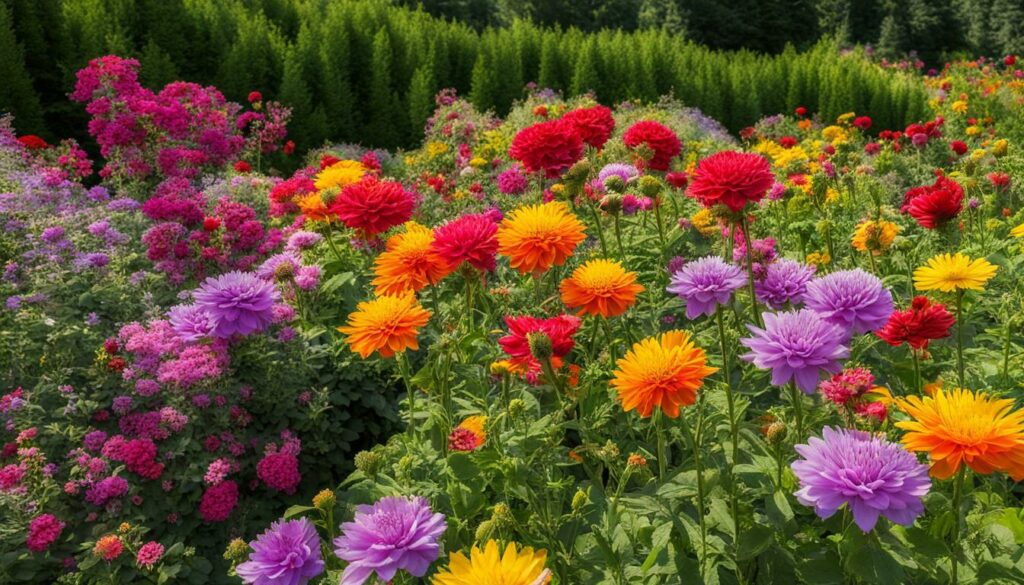
Now that you know the importance of pruning and deadheading, it’s time to get out there and give your plants some love! With these expert summer gardening tips, I’m confident your garden will be overflowing with vibrant blooms all season long. Stay tuned for the next section, where we will discuss fertilizing your summer garden.
Fertilizing your Summer Garden
Providing your plants with the right nutrients is essential for a productive summer garden. Here are my top productive summer gardening tips for fertilizing:
| Fertilizer Type | Application Rate | Application Frequency |
|---|---|---|
| Organic Fertilizer | 1-2 cups per 10 square feet of garden | Every 4-6 weeks |
| Chemical Fertilizer | 1/4 cup per 10 square feet of garden | Once a month |
You can choose between organic or chemical fertilizers, based on your preference. Organic fertilizers are an excellent choice as they are environmentally friendly, enhance the soil structure, and improve the soil’s water-holding capacity. They also release nutrients slowly, which means your plants get a gradual release of nutrients for sustained growth. Essential summer gardening tips for organic fertilizers include using compost, aged manure, bone meal, or fish emulsion.
Chemical fertilizers give a quick boost to your plants and are easy to apply. However, they have a higher risk of over-fertilizing and harming your plants. If you choose chemical fertilizers, follow the application rate and frequency recommended on the package. Apply when the soil is moist, and avoid using in extreme heat. If you’re looking for successful summer gardening tips, then always read the label carefully and avoid using too much fertilizer.
Remember, your plants need different types of nutrients like nitrogen, phosphorus, and potassium. Nitrogen encourages leaf growth, phosphorus aids in root development, and potassium promotes fruiting and flowering. Choose a fertilizer with the correct balance of nutrients to ensure your plants grow strong and healthy.
- Feed your plants in the morning when it’s cooler, and the soil is moist.
- Water your plants after feeding to help the nutrients reach the roots.
- Avoid over-fertilizing as it can damage your plants and cause chemical burns.
- If your plants show signs of yellowing leaves or stunted growth, then adjust your fertilizing regime.
- Stop fertilizing your plants two weeks before the end of the growing season, as it helps harden off the plants before winter.
Follow these essential summer gardening tips for fertilizing your garden to ensure robust growth and abundant harvests.
Managing Heat and Sun Exposure
As a gardener, one of the biggest challenges during the summer is managing extreme heat and sun exposure. High temperatures and intense sunlight can cause heat stress and sunburn in plants, leading to stunted growth and reduced yields. To ensure your garden thrives during the hot summer months, follow these expert tips.
Provide Adequate Shade
Shade is essential for protecting your plants from the scorching sun. As such, it’s best to locate your garden on the north or east side of a building or fence, where it can receive morning sunlight and afternoon shade. Another option is to create shade using a trellis, arbor, or shade cloth. These structures not only provide shade but can also add visual interest to your garden.
Water Your Plants Strategically
Watering your plants is essential during the summer to prevent dehydration and heat stress. However, it’s important to water your plants strategically. Water early in the morning or late in the evening to avoid evaporation and water loss. Additionally, water at the base of the plant to prevent sunburn on the leaves and other above-ground parts.
Apply Mulch
Mulch is a great way to regulate soil temperature, conserve moisture, and suppress weeds. Apply a layer of mulch around the base of your plants to protect the roots from the sun’s heat. Popular mulching materials include straw, hay, leaves, and grass clippings.
| Tip | Benefit |
|---|---|
| Use light-colored mulch | Reflects sunlight and keeps the soil and roots cooler |
| Water before mulching | Prevents water from being trapped on the surface and evaporating |
Choose Heat-Tolerant Plants
When selecting plants for your summer garden, look for varieties that are heat-tolerant. These plants are adapted to hot and dry conditions and can withstand high temperatures and sun exposure. Some examples of heat-loving plants include tomatoes, peppers, melons, and squash.
Protect Your Plants from Heat Stress
If you notice signs of heat stress, such as wilting or leaf scorch, take immediate action to protect your plants. Provide shade with a temporary structure or shade cloth, and water your plants deeply to rehydrate the roots. You can also mist your plants with water to cool them down and increase humidity.
By following these top summer gardening tips, you can effectively manage heat and sun exposure and keep your plants healthy and happy throughout the summer. Remember to provide shade, water strategically, apply mulch, choose heat-tolerant plants, and protect your plants from heat stress. Happy gardening!
Harvesting and Preserving Summer Crops
After months of hard work, it’s finally time to reap the rewards of your summer garden! Here are my best tips for harvesting and preserving your crops:
- Harvest early in the day when the temperatures are cool. This will ensure that your vegetables are at their freshest and that they will last longer.
- Use a sharp knife or garden shears to cut vegetables from the plant. Be careful not to damage the plant or surrounding fruits and vegetables.
- Harvest frequently to encourage continuous growth and prevent oversupply.
- Store vegetables in a cool, dry place to prolong freshness.
Preserving your summer crops is a great way to enjoy your hard work all year round. Here are my favorite methods:
Canning
Canning is a great way to preserve fruits and vegetables as they are at their peak of ripeness. Use a pressure canner for vegetables and a water bath canner for fruits.
Tip: It’s important to follow canning recipes carefully to ensure safe preservation and avoid the risk of botulism.
Freezing
Freezing is an easy and convenient way to preserve your summer crops. Blanch vegetables before freezing to maintain their color and texture.
Tip: Label and date all frozen items for easy identification and to ensure freshness.
Drying
Drying is a traditional method of preserving herbs, fruits, and vegetables. Use a dehydrator or air-dry in a warm, dry place.
Tip: Store dried items in an airtight container in a cool, dry place to prevent spoilage.
By following these productive summer gardening tips, you can harvest and preserve your summer crops for year-round enjoyment!
Conclusion
Thank you for reading my essential gardening tips for summer. By following these tips, you can maximize your greens and enjoy a bountiful garden throughout the season.
Take Action
Now it’s time to put these tips into action! Start by planning and preparing your garden, selecting the right plants, and mastering watering techniques. Don’t forget to mulch, control pests, deadhead blooms, and fertilize regularly.
It’s also important to manage heat and sun exposure, protect your plants from sunburn and heat stress. Finally, harvest and preserve your summer crops to savor the flavors all year round.
Happy Gardening!
By implementing these tips, you can enjoy a productive and beautiful summer garden. I hope you found these tips helpful and wish you the best of luck with your gardening endeavors. Happy gardening!
FAQ
Are these gardening tips suitable for beginners?
Absolutely! These tips are designed to be easy to follow and are suitable for gardeners of all levels, including beginners.
How often should I water my plants during the summer?
It’s important to keep your plants hydrated, especially during the hot summer months. Watering once or twice a week, ensuring the soil is thoroughly moist, is generally sufficient. However, it’s best to monitor the moisture levels and adjust accordingly based on the specific needs of your plants.
What types of plants are best for summer gardening?
When selecting plants for your summer garden, look for varieties that are heat tolerant and thrive in sunny conditions. Some popular options include tomatoes, peppers, cucumbers, zucchini, sunflowers, marigolds, and petunias.
How can I prevent pests and diseases in my summer garden?
To prevent pests and diseases, maintain good garden hygiene by removing any infected or diseased plants promptly. Additionally, practicing crop rotation, providing proper spacing between plants, and using organic pest control methods can help keep your garden healthy.
When should I prune my summer blooming plants?
It’s best to prune summer blooming plants in early spring before new growth appears. This will help stimulate branching and result in more abundant blooms during the summer months.
How often should I fertilize my summer garden?
Fertilizing frequency will depend on the specific needs of your plants. Generally, it’s beneficial to fertilize your summer garden every 4-6 weeks using a balanced organic fertilizer. Follow the instructions on the fertilizer package for the recommended application rate.
How can I protect my plants from extreme heat and sun exposure?
To protect your plants from heat and sun exposure, provide them with shade using umbrellas, shade cloth, or plant them near structures that offer natural shade. Additionally, mulching the soil around your plants can help retain moisture and regulate soil temperature.
When is the best time to harvest summer crops?
The best time to harvest summer crops varies depending on the specific plant. Generally, you should harvest vegetables when they are fully ripe and at their peak flavor. For herbs and flowers, harvest in the morning after the dew has dried but before the heat of the day.
How can I preserve my summer harvest for later use?
There are several methods to preserve your summer harvest, including freezing, canning, dehydrating, and pickling. Choose the preservation method that best suits the type of crop you want to preserve, and follow the appropriate guidelines for each method.

